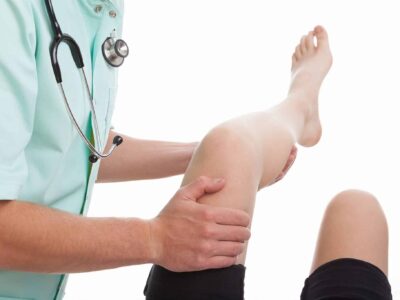PRP stands for Platelet Rich Plasma. Platelet-rich plasma is harvested from your own blood and involves the isolation of the portion of blood that includes growth and healing factors that would be injected back into the area of concern, usually a joint space or tendon. While PRP use in sports and orthopedic medicine has been increasing in recent years, it has been used since the mid-1990s in dental and oral surgery and to aid in soft tissue recovery following plastic surgery.
Platelet Rich Plasma (PRP)

HOW IS PRP ADMINISTERED?
PRP therapy is a fairly quick treatment, taking around 30 minutes to prepare and complete. We’ll begin by collecting 30 milliliters of the patient’s blood. Then, using a negative pressure extraction technique, the platelets are fractured freeing the growth and healing factors within. After a centrifuge process which involves spinning the sample to separate the PRP from whole blood components, the PRP is injected into the site of the injury or pain. Platelets function as a natural reservoir for growth factors that are essential to repair injured tissues. The growth factors that the platelets secrete stimulate tissue recovery by increasing collagen production, enhancing tendon stem cell proliferation, and tenocyte-related gene and protein expression. These growth factors also stimulate blood flow and cause the cartilage to become more firm and resilient. PRP activates tenocytes to proliferate quickly and produce collagen to repair injured tendons, ligaments, cartilage, and muscles.
WHO HAS USED PRP THERAPY?
PRP treatment has been growing in popularity in recent years thanks to widespread recognition in the sports world. Hines Ward and Troy Polamalu of the Pittsburgh Steelers received PRP therapy before winning Super Bowl XLIII. Other high profile athletes include Tiger Woods who received four treatments following knee surgery and pitchers Takashi Saito and Bartolo Colon — both recent examples of PRP success in Major League Baseball.
WILL I FEEL IMMEDIATE RESULTS FROM PRP THERAPY?
Many patients feel a fullness or pain in the injected areas in the days following the injection, but the pain subsides each day as functional mobility and general functional ability increase. You’ll notice a gradual improvement for 2-6 weeks after PRP therapy; some patients report continued improvement 6-9 months after treatment.
IS PRP THERAPY A SUBSTITUTE FOR SURGERY? WHY DOES IT WORK?
Not necessarily. While many chronic conditions may respond to PRP therapy, preventing the need for a surgical procedure, it is impossible to predict which who will respond and who won’t do so with this treatment.
PRP initiates a renewed healing response and introduces super- concentrated healing factors into injured areas that otherwise have a poor blood supply, scarring, and a generally difficult time healing. PRP therapy, in combination with appropriate reconditioning, we may improve the chance of healing and diminish the opportunity for escalation of the injury. In some studies, Ultrasound and MRI images have shown definitive tissue repair has occurred after PRP therapy, supporting the proof of the healing process. By treating injured tissues before the damage progresses, surgical intervention may be avoided. A positive result may decrease the need for surgical intervention.
Schedule Your Consultation
Are you ready to explore an integrated approach to whole-health wellness? Our number one goal is always to be proactive, diligent, and driven to provide the absolute best care. Schedule a consultation with us today and learn what personalized, patient-focused care can do for you.

